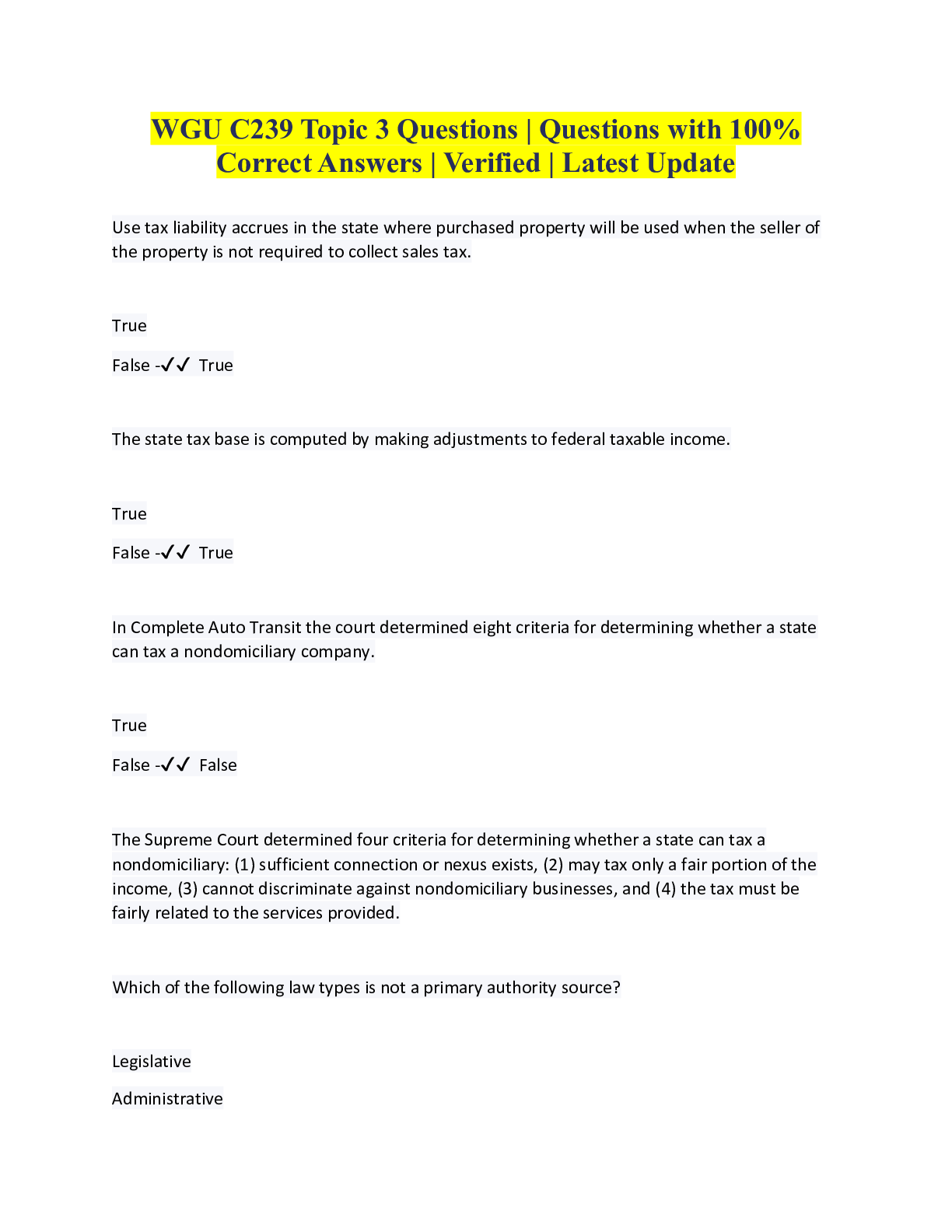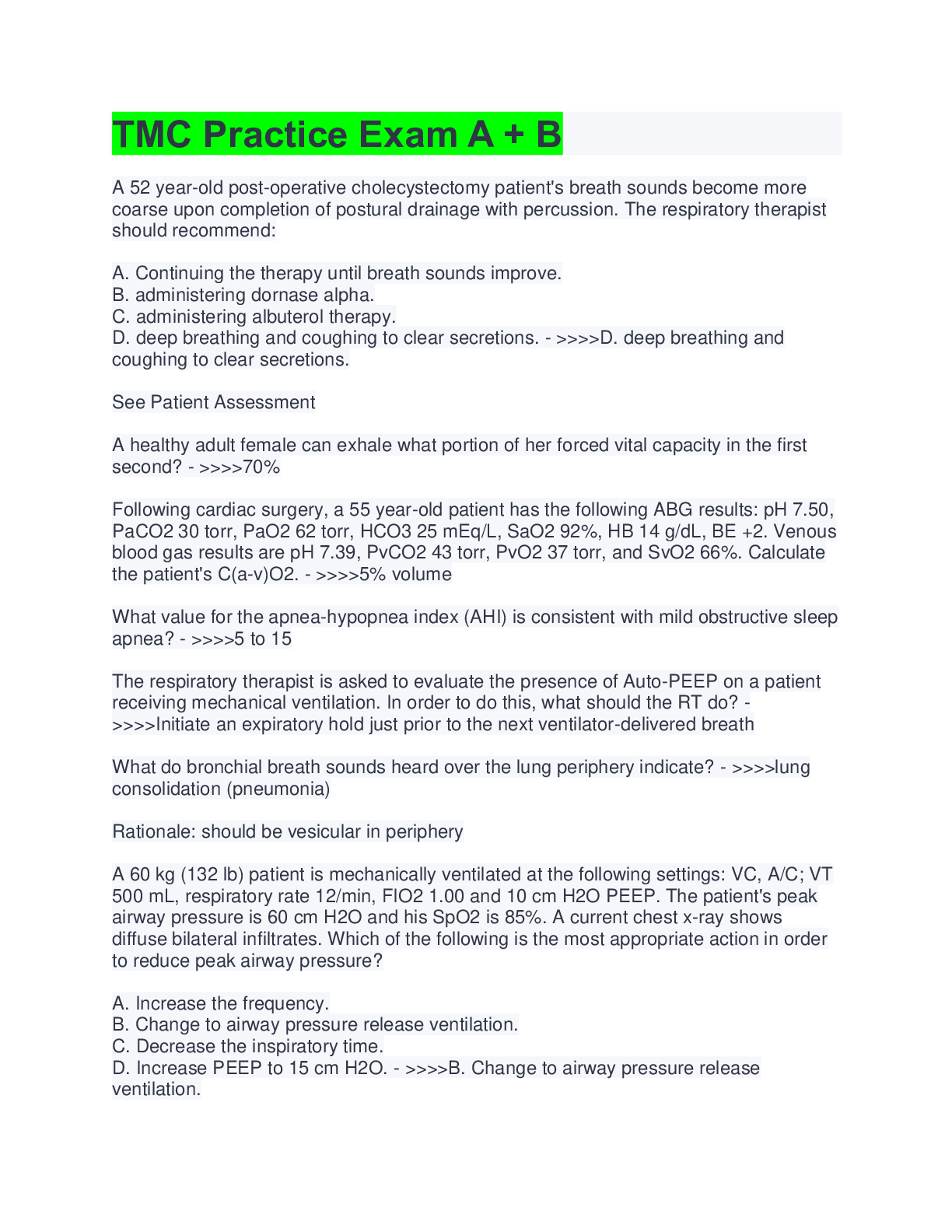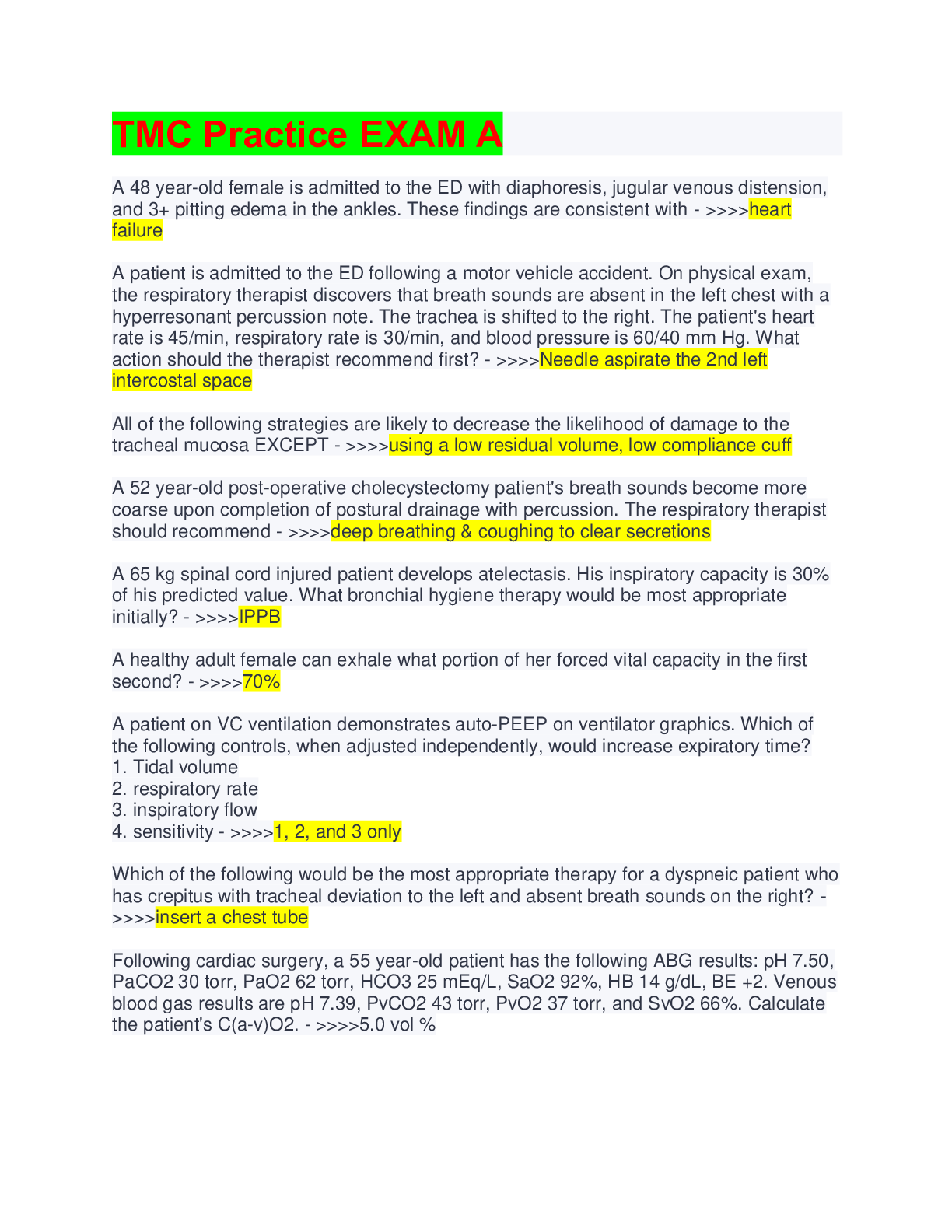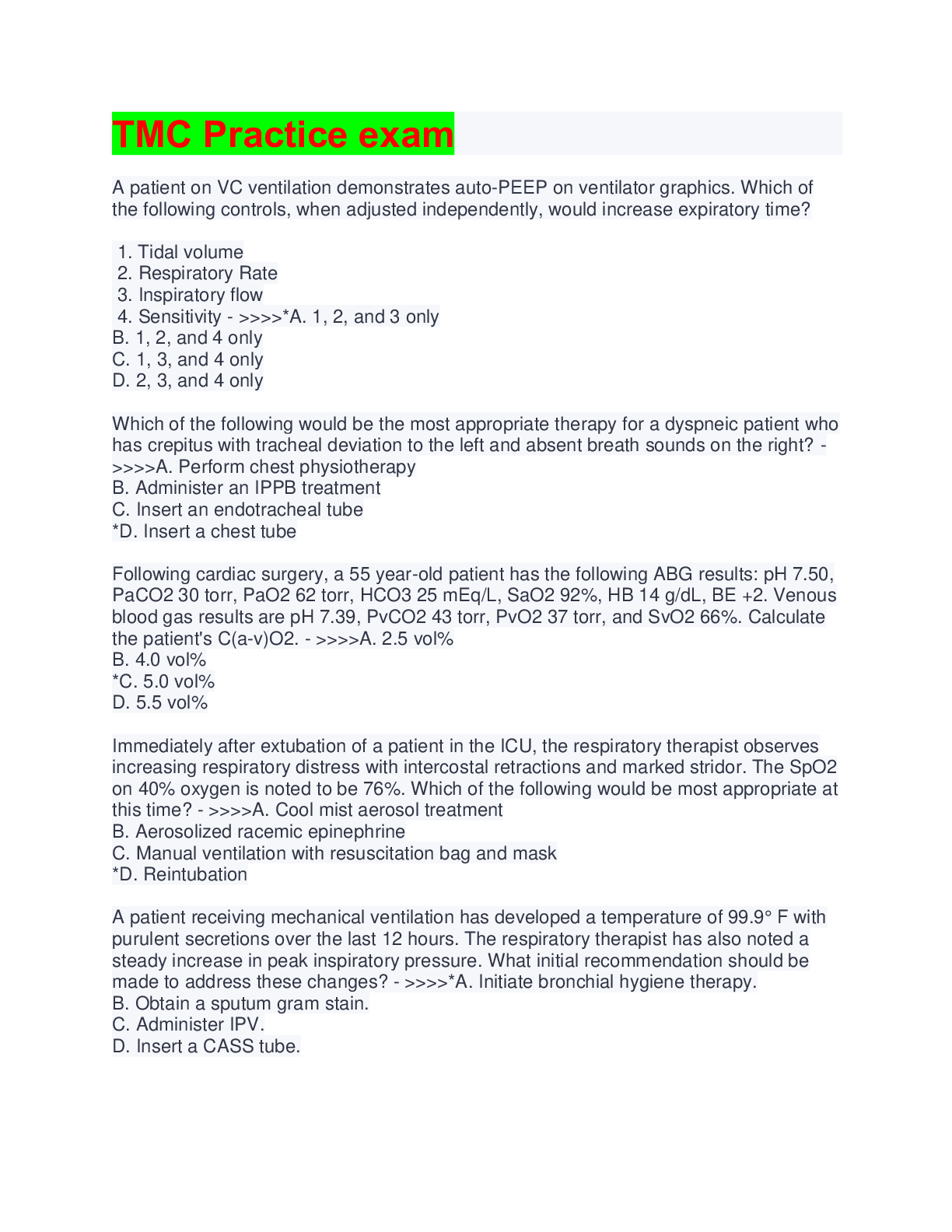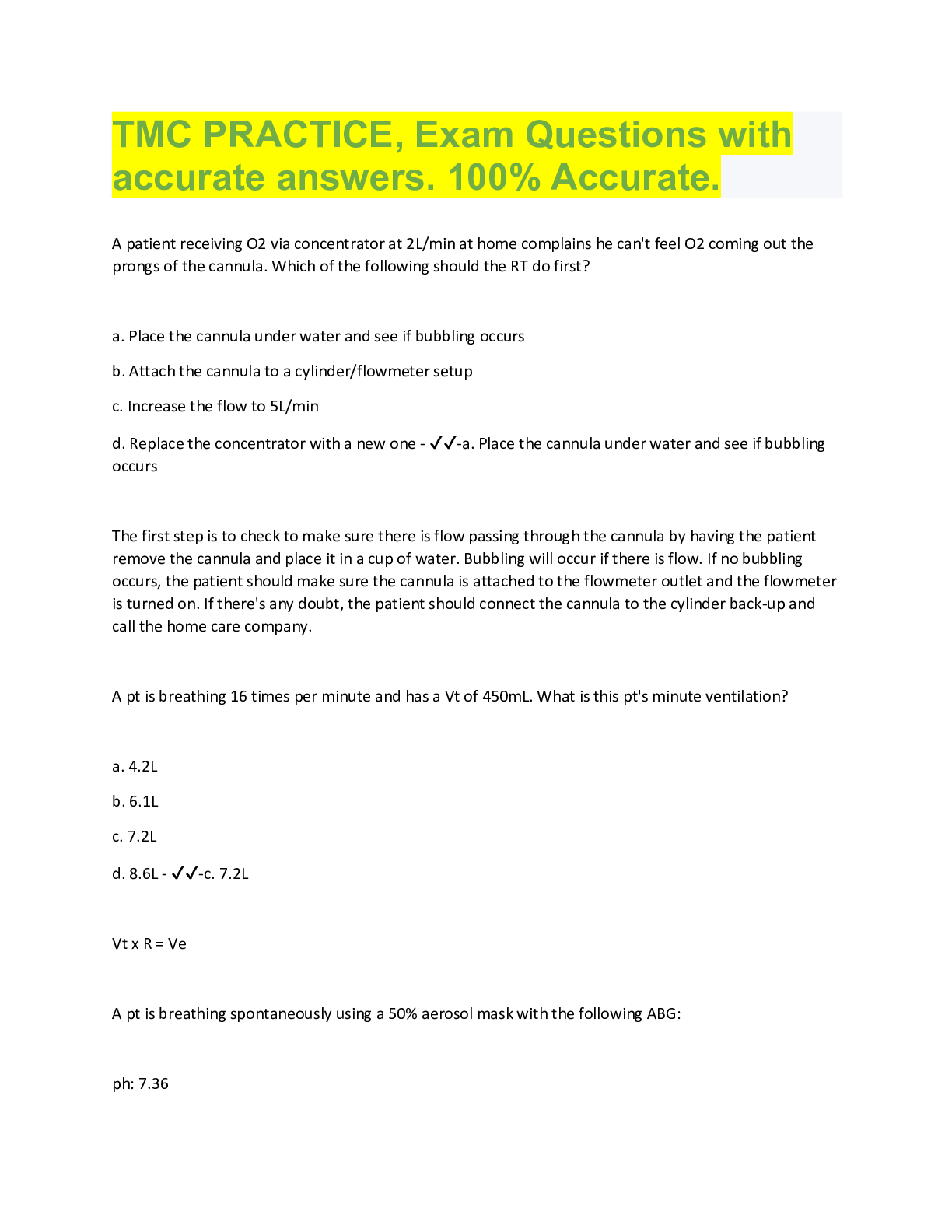Information Technology > QUESTIONS & ANSWERS > Certified Information Security Manager Questions with 100% Correct Answers, Graded A (All)
Certified Information Security Manager Questions with 100% Correct Answers, Graded A
Document Content and Description Below
Certified Information Security Manager Questions with 100% Correct Answers Resource allocation is crucial during incident triage as it assists in prioritization and categorization. Why would this b... e critical for most organizations when conducting triage? A. Most organizations have limited incident handling resources B. Categorization assists in mitigation C. Prioritization aides in detection D. Most organizations assign incidents based on criticality -Answer- A. Most organizations have limited incident handling resources Who is in the best position to judge the risks and impacts since they are most knowledgeable concerning their systems? A. Internal auditors B. Security management C. Business process owners D. External regulatory agencies -Answer- C. Business process owners In order to establish prioritization in the effective implementation of an organization's security governance, primary emphasis should be placed on? A. Consultation B. Negotiation C. Facilitation D. Planning -Answer- D. Planning All actions dealing with incidents must be worked with cyclical consideration. What is the primary post-incident review takeaway? A. Pursuit of legal action B. Identify personnel failures C. Incident management report D. Derive ways to improve the response process -Answer- not b or cWhich of the following is the most significant challenge when developing an incident management plan? A. A plan not aligning with organizational goals B. Compliance and regulatory requirements C. A cohesive incident threat matrix D. Lack of management and leadership buy-in -Answer- D. Lack of management and leadership buy-in Residual risks can be determined by: A. Calculating remaining vulnerabilities after creating controls B. Performing a threat analysis C. Performing a risk assessment D. Through risk transference -Answer- C. Performing a risk assessment Which is the most effective solution for preventing internal users from modifying sensitive and/or classified information? A. Baseline security standards B. System access violation logs C. Role-based access control D. Exit routines -Answer- C. Role-based access control As part of the Risk Management process, assessments must be performed on the information systems and resources of an organization. If there are vulnerabilities disclosed during an assessment, those vulnerabilities should be: A. Handled as a risk without a threat consideration B. Prioritized for re-mediation solely based on impact C. Reviewed to analyse information security controls D. Evaluated and prioritized based on credible threat and impact if exploited and and mitigation cost -Answer- D. Evaluated and prioritized based on credible threat and impact if exploited and and mitigation cost A security strategy is important for an organization, and along with the creation of supporting policies, the overall planning effort should cover? A. The logical security architecture for the organizationB. The intent and direction and expectations of management C. Provides standard operating procedure for users on the GIG D. Assist in FISMA audits -Answer- B. The intent and direction and expectations of management Data owners are concerned and responsible for who has access to their resources and therefore need to be concerned with the strategy of how to mitigate risk of data resource usage. Which of the following actions facilitates that responsibility? A. Platform security B. Entitlement changes C. Intrusion detection D. Antivirus controls -Answer- B. Entitlement changes A successful risk management program should attempt to achieve: A. A breakeven point of risk reduction and cost B. Separation of risk and BCP efforts C. Mitigation of all man-made internal threats D. Elimination or transference of all information risks -Answer- A. A breakeven point of risk reduction and cost Decisions to build an alternate facility or outsource to a hot site must be business decisions and take into consideration similar risks. Which of the following facilitates this decision? A. Cost associated with a site rebuild B. The cost to repair the organization's image after an incident C. The location and cost of commercial recovery facilities D. The estimated annualized loss expectancy (ALE) from key risks -Answer- C. The location and cost of commercial recovery facilities Which insurance is used to protect an organization against dishonest or fraudulent internal employee behavior? A. Fidelity B. ProgressiveC. Errors and Omissions D. Business -Answer- A. Fidelity Risk analysis is where the level of risk and its nature are assessed and understood, and it should: A. Be based on the profiles of similar companies B. Provide an equal degree of protection for all assets C. Equally consider the potential size and likelihood of loss D. Provide more weight to the likelihood vs. the size of loss -Answer- C. Equally consider the potential size and likelihood of loss Risk management is different in each organization based on an organization's appetite for risk. Understanding organizational risks and an organization's business objectives assists in this process. It is not practical to eliminate all risk and therefore a risk manager should strive for: A. Achieving a risk and organizational goals equilibrium B. Reducing risk to an acceptable level C. Ensuring that policy development considers organizational structure D. Addressing external regulation as threats -Answer- B. Reducing risk to an acceptable level When contracting with an outsourced party to provide security administrators, which is the most important contractual element? A. Right-to-terminate clause B. Limitations of liability C. Service Level Agreement, SLA D. Financial penalties clause -Answer- C. Service Level Agreement, SLA All actions dealing with incidents must be worked with cyclical consideration. What is the primary post-incident review takeaway? A. Pursuit of legal action B. Identify personnel failures C. Incident management reportD. Derive ways to improve the response process -Answer- not c In order to implement a successful information security program, it is vital to have: A. Emerging security technologies training B. Communication channels with process owners C. Comprehensive policies and standards and procedures D. Commitment from executive management -Answer- D. Commitment from executive management Because risks both internal and external are continuously changing, a risk assessment should be conducted: A. Once a year for each business process area and sub-process B. As regulatory requirements are released per FISMA C. By external parties to maintain objectivity D. Annually or whenever there is a significant change -Answer- not b or c To address the ever changing risk and threat, an effective risk management program should: A. Ensure the establishment of continuous monitoring processes B. Establish proper security baselines for all information resources C. Create a Disaster Recovery Plan D. Change security policies on a timely basis to address changing risks -Answer- not b or d Along with attention to detail what is an additional quality required of an incident handler? A. Presentation skills B. Ability to speak to the media C. Certification and training D. Ability to handle stress -Answer- D. Ability to handle stressWhen implementing an information security program, in which phase of the implementation should metrics be established to assess the effectiveness of the program over time? A. Testing B. Initiation C. Design D. Development -Answer- C. Design Governance frameworks require continuous analysis, monitoring, and feedback to achieve higher levels of maturity based on a maturity model concept. While there are tools like ROSI and KRI, it is important to remember that security is a process, not an: A. Event B. Project C. System D. Indicator -Answer- A. Event Strong Information Security governance within an organization can offer many benefits. Which of the following is not a benefit? A. Providing assurance and compliance B. Reputation protection C. Customer relationship improvement D. Technological ROI -Answer- D. Technological ROI When properly implemented a risk management program should be designed to reduce an organization's risk to: A. A level that is minimized beyond measure B. A point where the benefit exceeds the expense C. A level at which the organization is willing to accept D. A rate of return where qualitative aspects are disregarded -Answer- C. A [Show More]
Last updated: 1 year ago
Preview 1 out of 12 pages
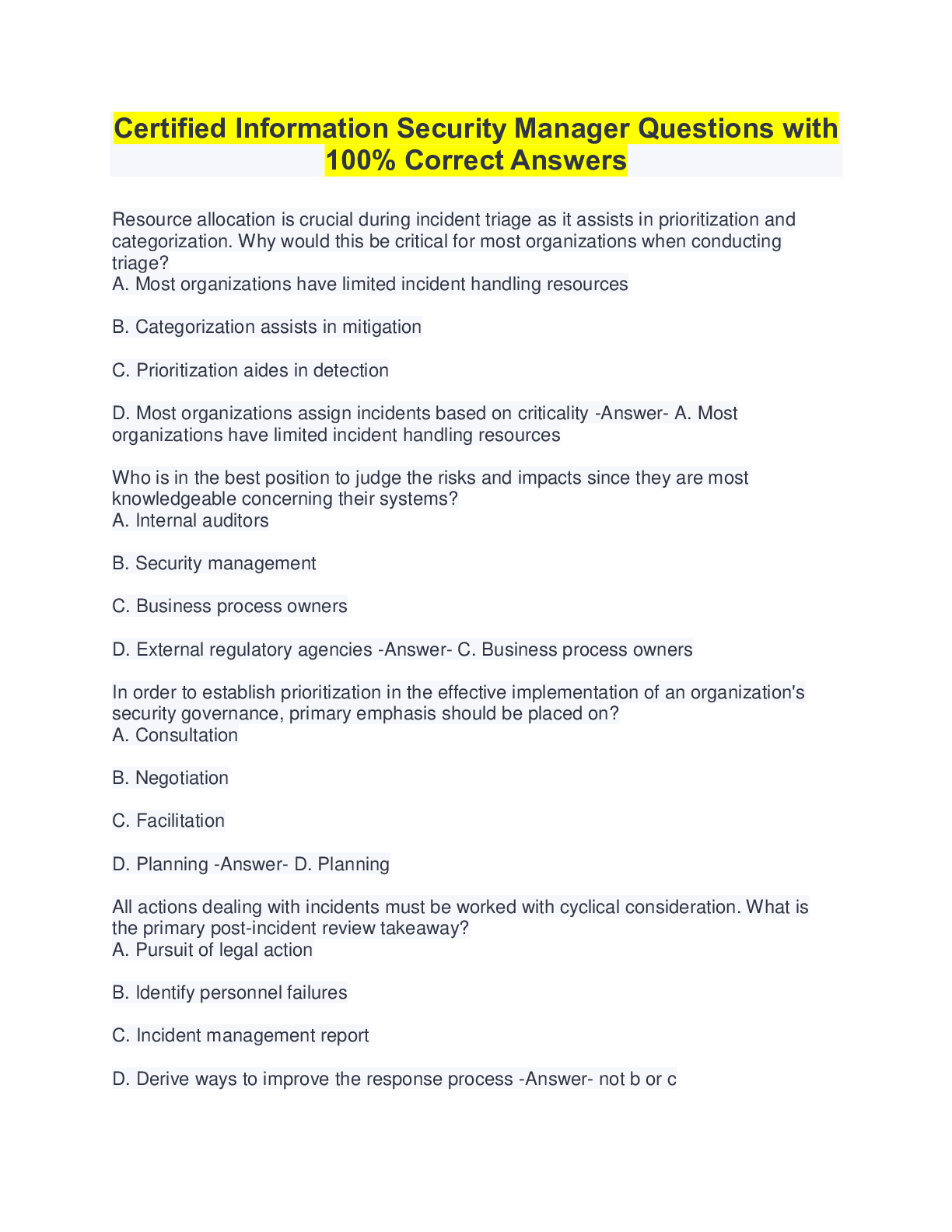
Reviews( 0 )
Document information
Connected school, study & course
About the document
Uploaded On
Sep 21, 2022
Number of pages
12
Written in
Additional information
This document has been written for:
Uploaded
Sep 21, 2022
Downloads
0
Views
66









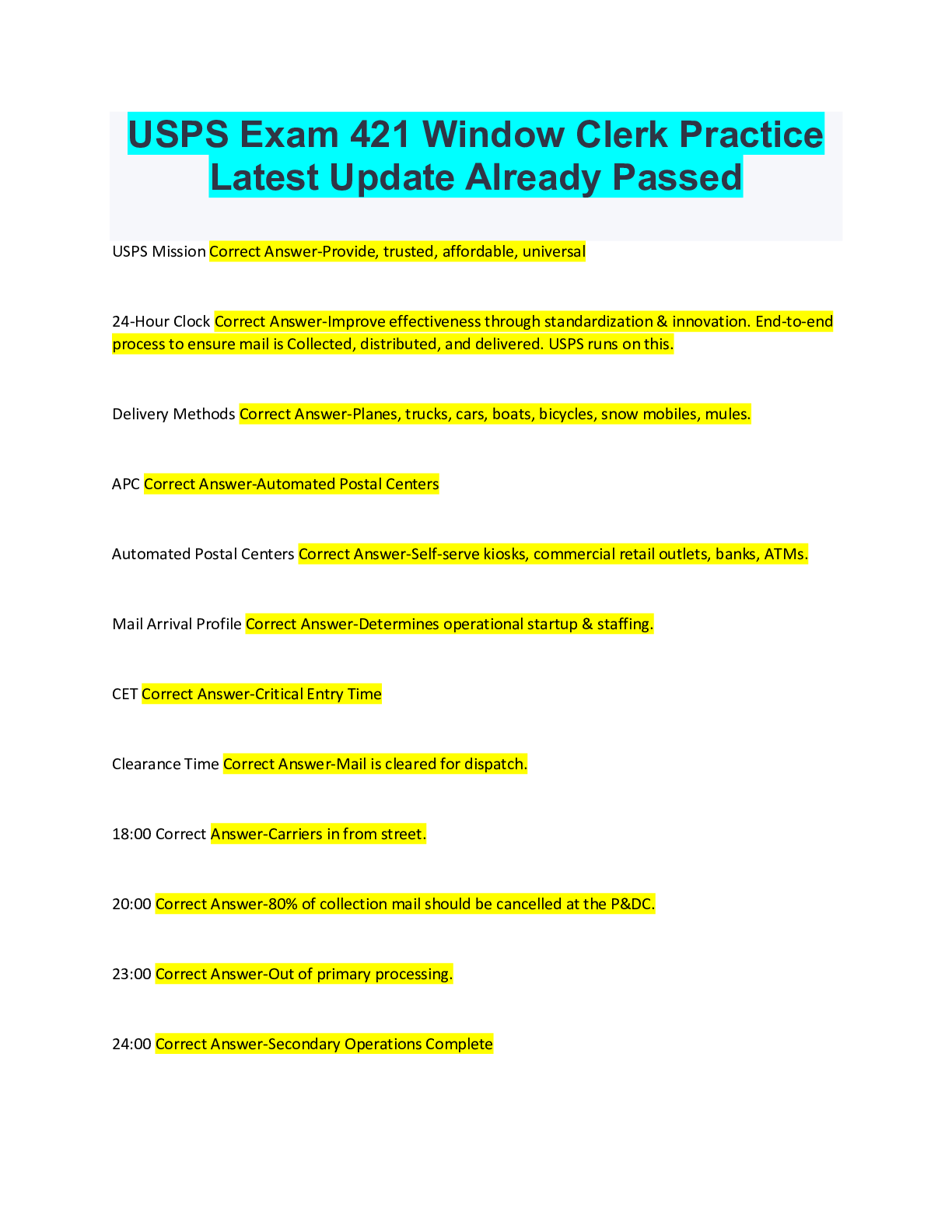

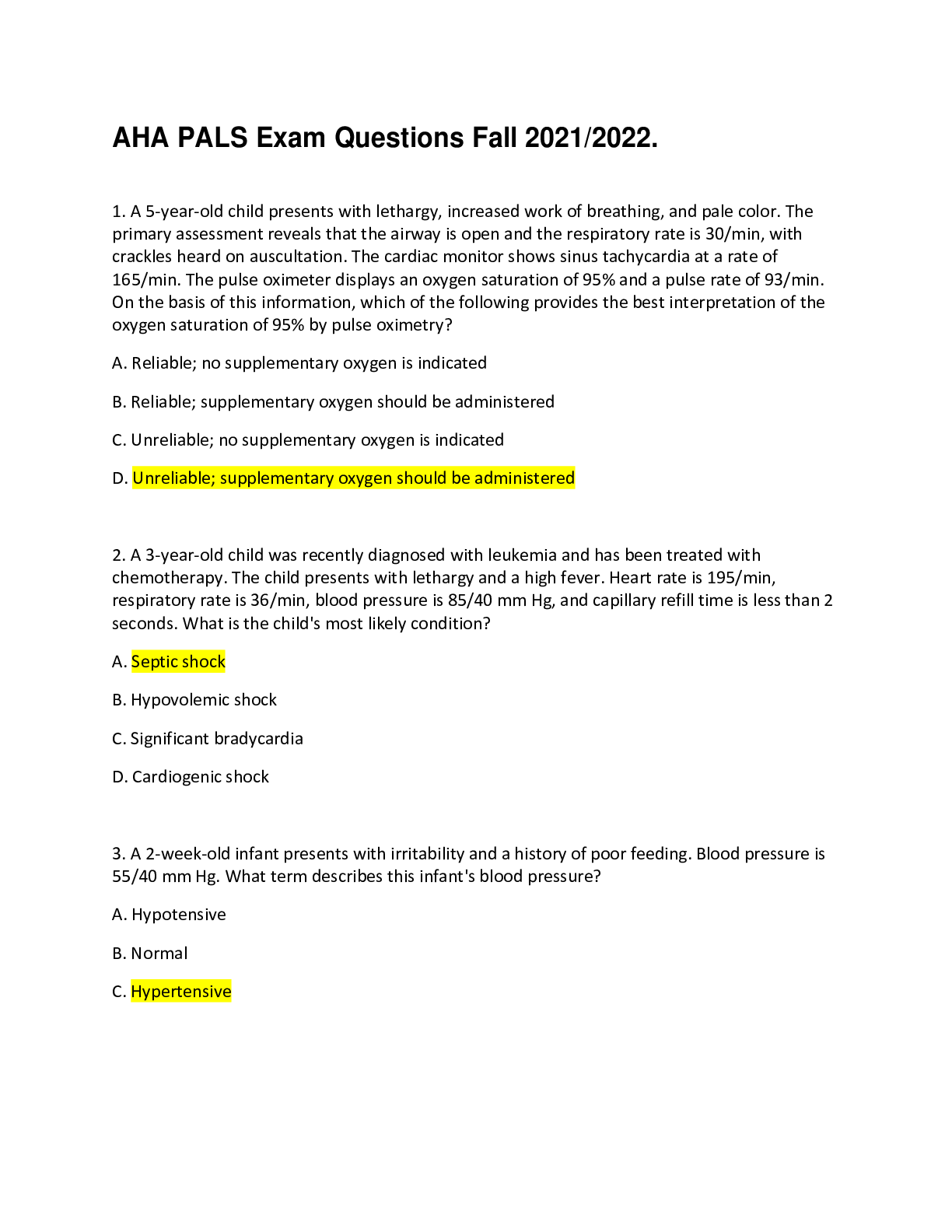


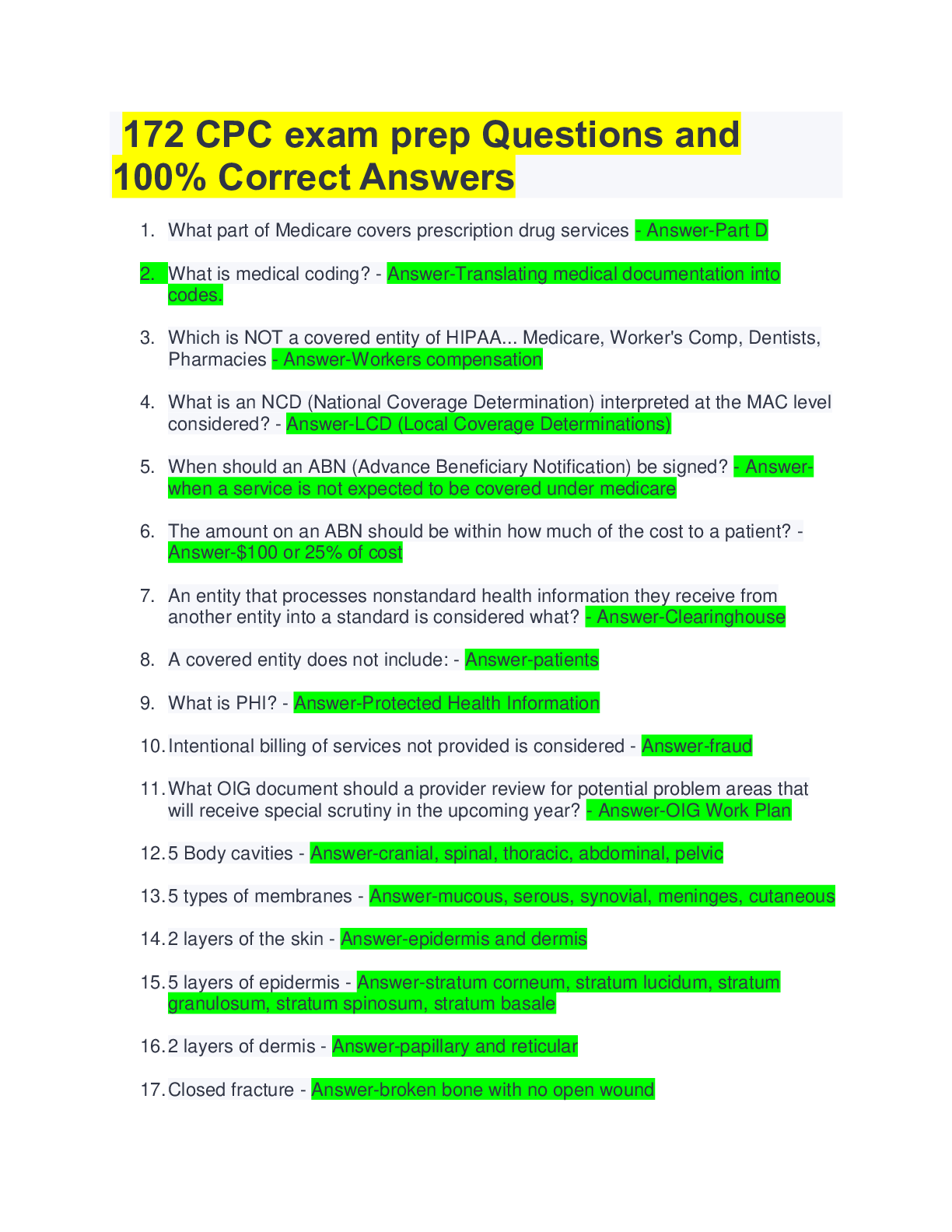
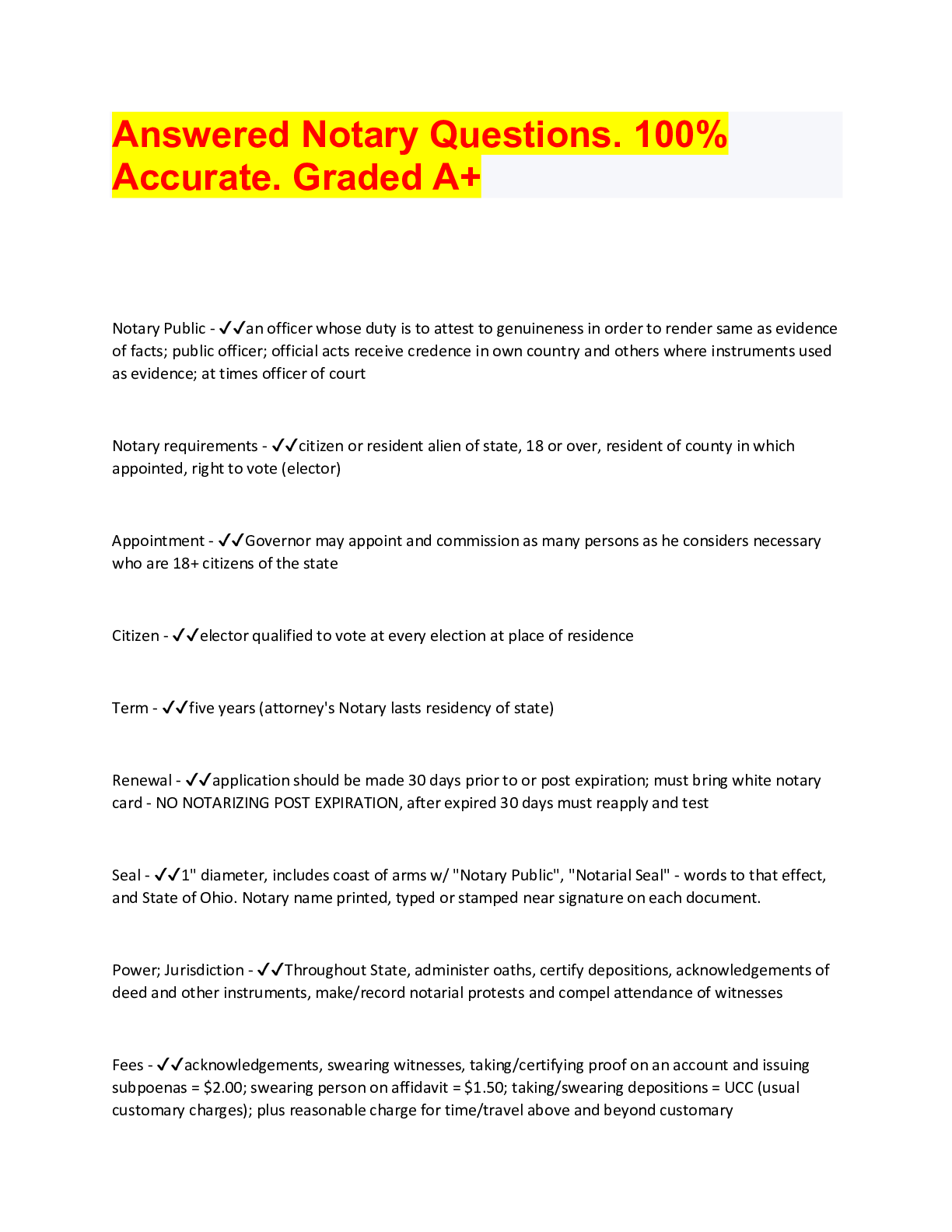

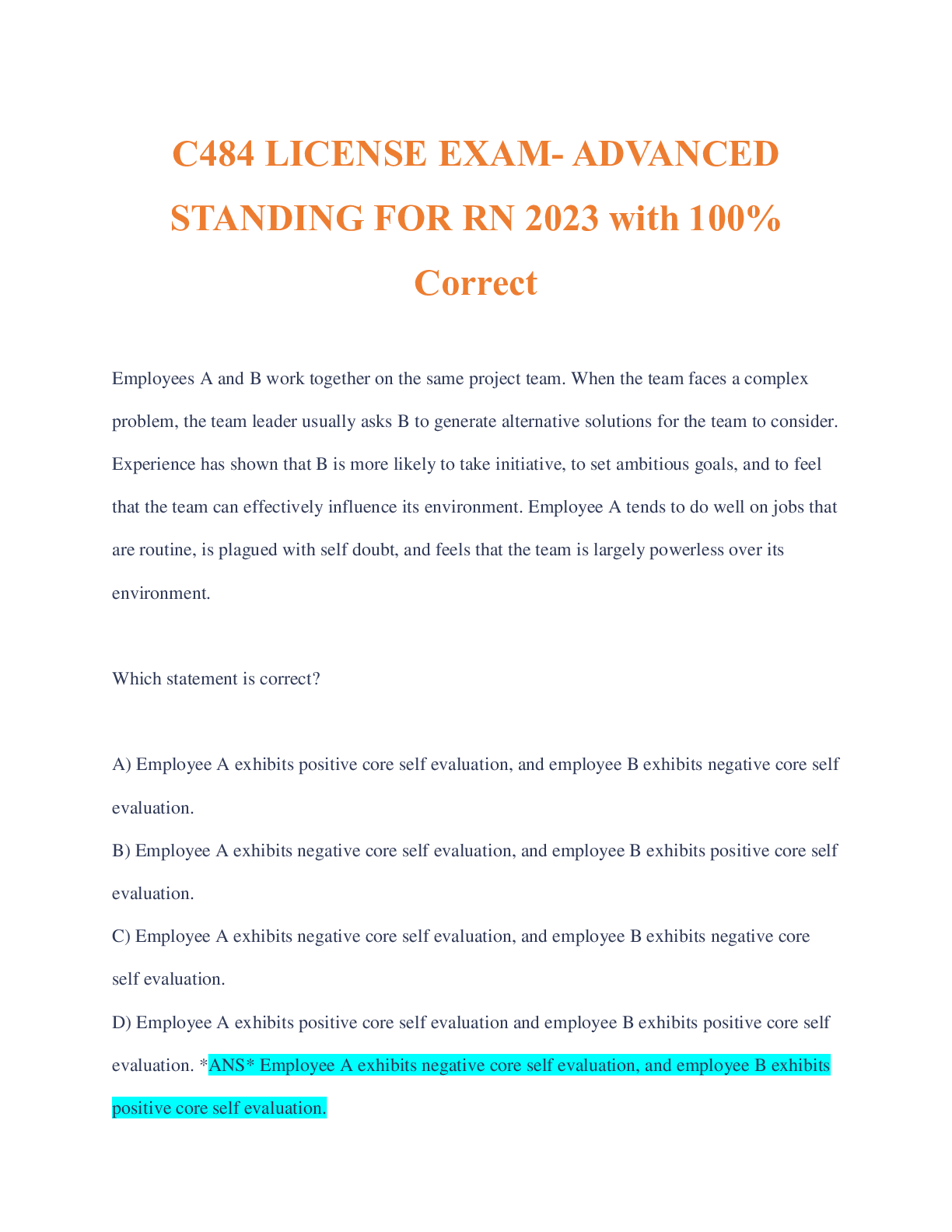
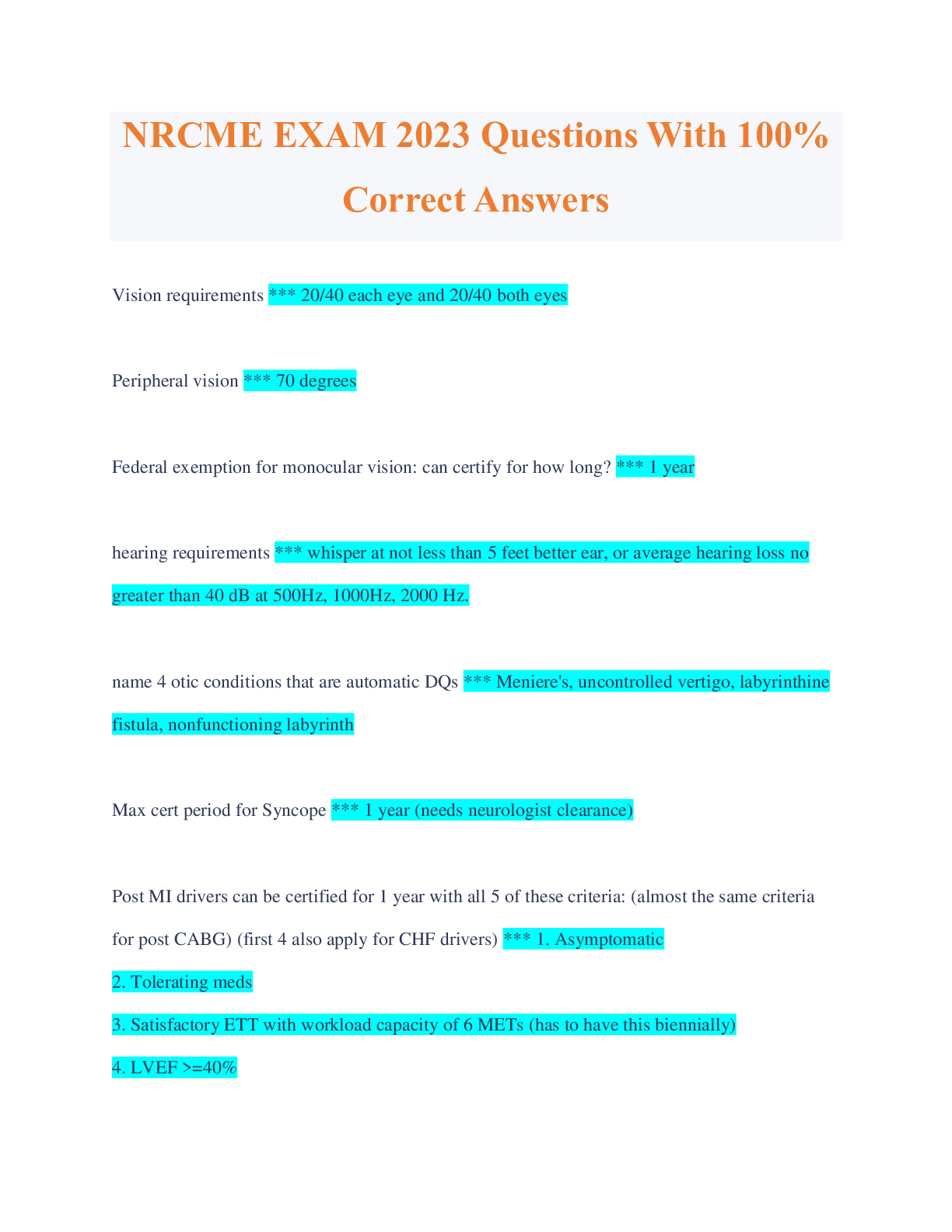


.png)

.png)

.png)
